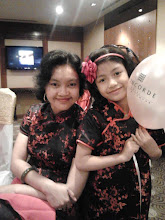Review on
Connecting the Digital Dots: Literacy of the 21st Century
Source: Jones-Kavalier, B.R. & Flannigan, S.L. (2006) Connecting the Digital Dots: Literacy of the 21st Century. Educause Quarterly (2)
This review is for discussion based on these questions:
“How has the ability of students to access whatever, whenever, wherever through information and communication technologies changed the way they interact and process that information? What are the new skills and abilities needed to cope with this stream of information? What changes have you seen in your own students - if any?”
From the source, I could categorise my view in two aspects, as follows.
IT Infrastructure:
I agree with Jones-Kavalier & Flannigan (2006) on educational organisations developing "comprehensive technology plans... to enhance students' digital and visual literacy". It is quite true, but then again, even if they provide, it's not ample or strong enough, especially when technology has to be upgraded very frequently. Yesterday we had blogs, today we have pod-casts, tomorrow we'll have moodles, what's next? Changes in technology itself is hard for us to keep up, and students are much more updated on the technology that one of my students brought it up in the class asking, "Why are we still using the old technology, the new release was last year!" We have to remember that every time new technology is introduced, it requires new hardware, software, network bandwith capacity, etc.
Making sense of what we find online:
Gilster (1997), as cited by Jones-Kavalier & Flannigan (2006) mentioned that "the most critical of [digital literacy] is the ability to make educated judgments about what we find online". As I pointed out before, having the skill of using the digital media is not just it, it's only a start. The real challenge is to make sense of the information we (and students) get online, and "dealing with complexity" of the information overload. Students need the knowledge of how to trim down and filter the information they find, to get to the focused result expected. Until today, I still don't trust my students in their 'research' because of the way they present the reports that are hardly filtered. They found one article, which roughly has what they want, and they copy a whole chunk of it. They don't even know how to add their own words within the 'chunk' they get - and that shows that they don't really understand what they 'copied'. (And after that they argued saying that they've worked hard all night doing the research and they've paraphrased the content, etc... which is not true.)
Digitally Signed,
- Sha @ Teaching and Learning
05 Oct 2008
Saturday, October 4, 2008
Subscribe to:
Post Comments (Atom)

No comments:
Post a Comment